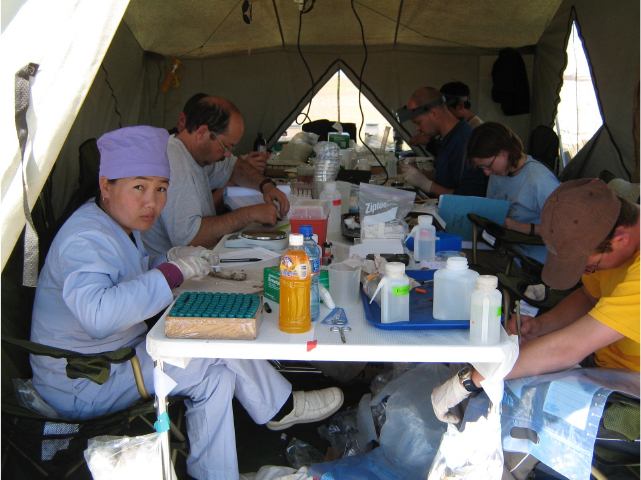
ONGOING PROJECTS
NEMATODE SYSTEMATICS

We describe species of nematodes found in mammals and reptiles. We reconstruct the phylogenies for nematodes and use these to identify defining characters, species limits and patterns of distribution. To reconstruct the historical associations among parasites and their hosts one needs to 1) inventory the diversity of parasites and 2) reconstruct their phylogeny.
Heligmosomoidea
Arguably one of the most diverse groups of nematodes parasites of tetrapods. The group is well represented in small sized mammals and it includes representatives from every continent. The taxon also includes two species that are used in biomedical research as model organisms: Nippostrongylus brasiliensis and Heligmosomoides polygyrus. We are developing taxonomic tools, including keys and online resources to assist scientists identifying these parasites and using the phylogenies to make meaningful inferences.
Nematodes of amphibians
We are identifying parasites of amphibians and reptiles from the New World. We are currently evaluating the genetic and morphological diversity of the tadpole pinworm Gyrinicola batrachiensis. We are also completing species level identifications to complete the biological inventory of nematodes of reptiles across Mexico.
WILDLIFE DISEASES
Landscape modification has increased the interaction among anthropic wildlife, domesticated animals and humans. These interactions expose the animals involved to compatible pathogens, which pathogenesis may vary depending on the biology of the hosts. In several instances these infections may increase mortality or become foci of zoonotic disease. It is necessary to document the presence of parasites in hosts of disparate taxa.
Pathogens of mesocarnivores
Common species across North America act as carriers of infectious agents. We are documenting and quantifying these pathogens in wildlife populations. Further, we identify the environmental variables that determine their distribution.
Expansion of Neotropical mammals and their parasites
Several mammalian lineages including opossums, armadillos and sigmodontine rodents had expanded northward. In some instances they have brought lineages of parasites with them. We document the expansion of these mammals, mainly armadillos, and their parasites.
Training of scientist on the use of scientific collections

This is a project spearheaded by Drs. Travis Marsico and Kurt Neubig. The goal of the project is to increase the retention and graduation success of students from demographics not represented in the STEM workforce. We do this by training them in the use of collections, the students receive training and mentoring from PIs and graduate studetnts, who form a supportive cohort. Find more details about SUPERB, supported by the National Science Foundation, Division of Undergraduate Education (NSF-DUE).
